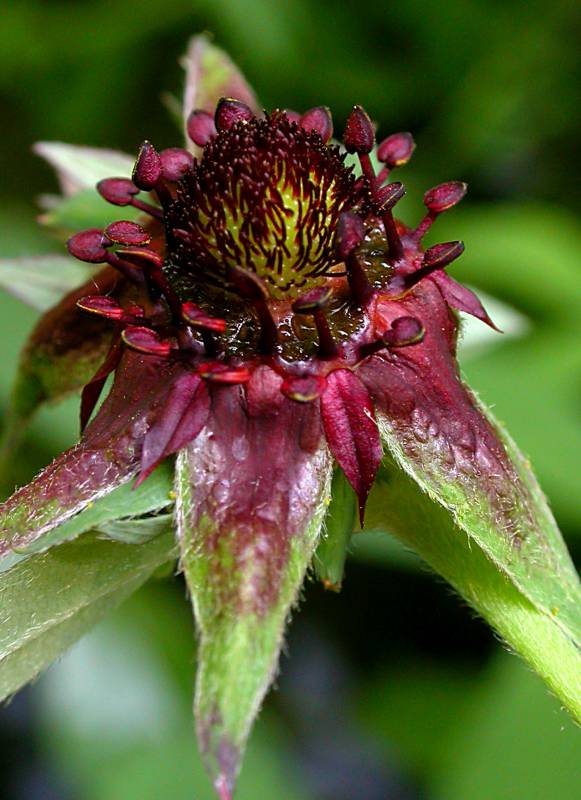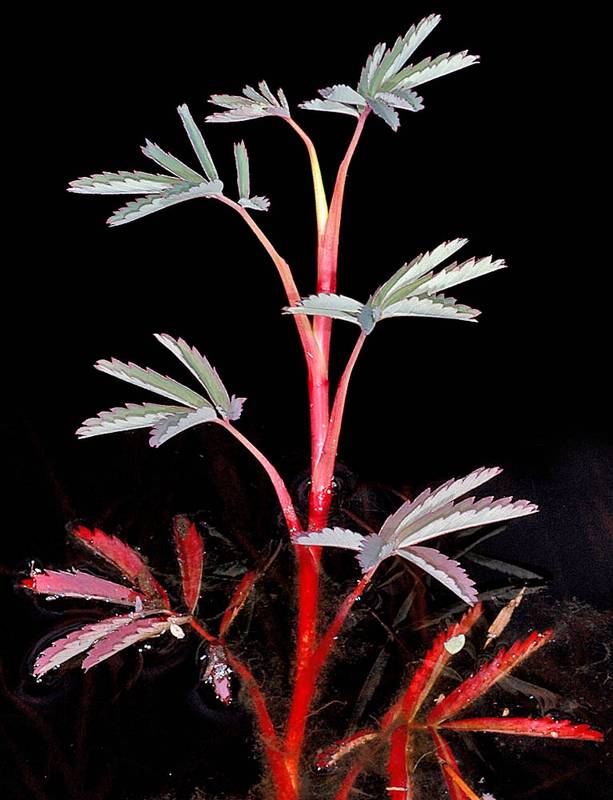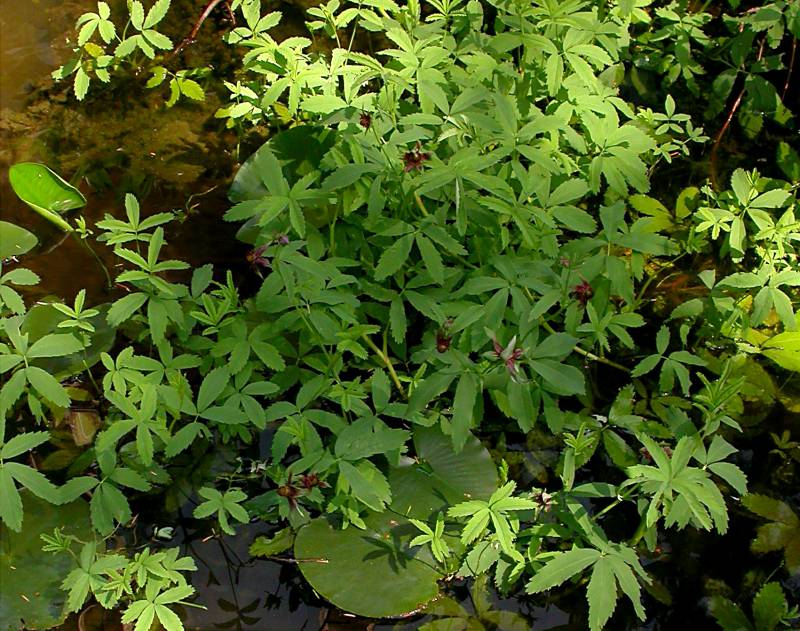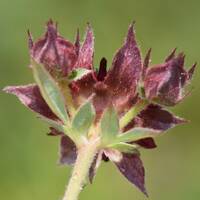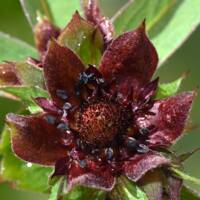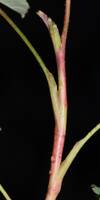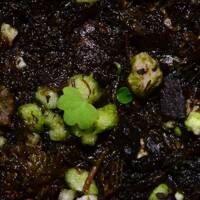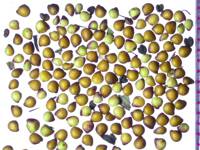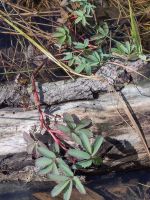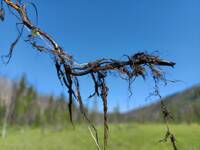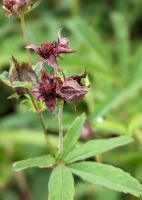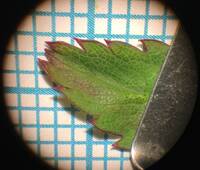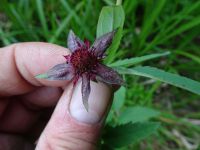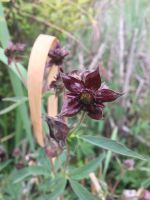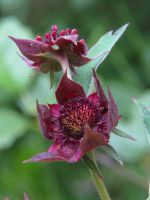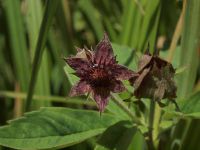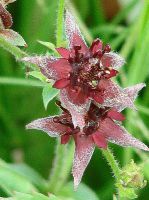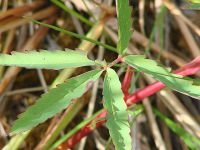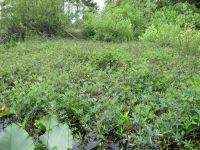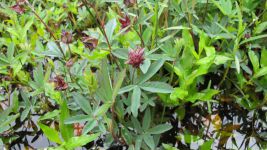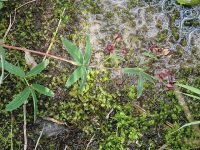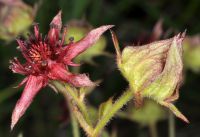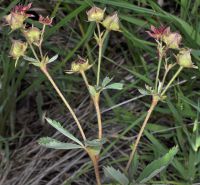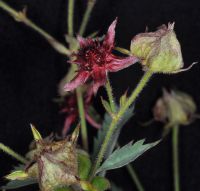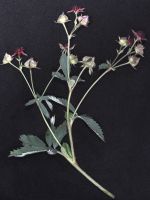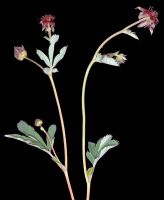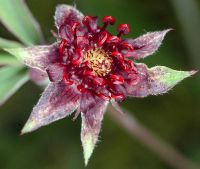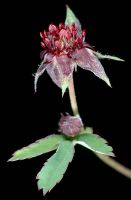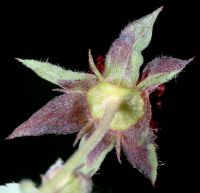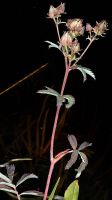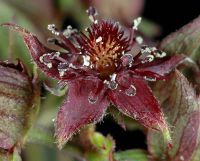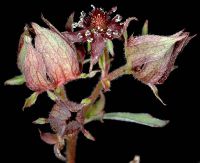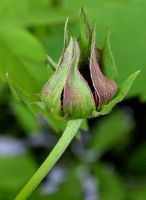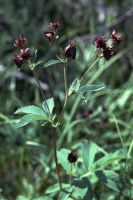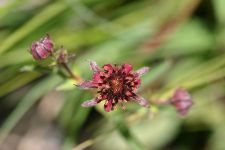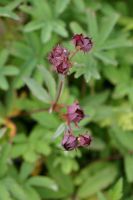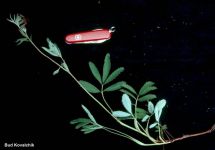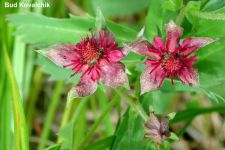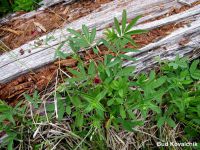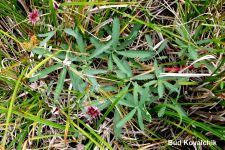Distribution: Widely distributed on both sides of the Cascades crest in Washington; Alaska to California, east across the northern portion of North America to the Atlantic Coast.
Habitat: Bogs, wet meadows and lake margins, sea level to subalpine.
Flowers: June-August
Origin: Native
Growth Duration: Perennial
Conservation Status: Not of concern
Herbaceous perennial from strong rhizomes, with floating or prostrate, reddish stems up to 1 m. long, glabrous below, becoming hairy and purplish-glandular above. The tips of floating stems often turn upright.
Leaves alternate, pinnate, the leaflets 5-7, mostly glabrous and light green on the upper surface, paler, glaucous, and appressed-silky on the lower, obovate to narrowly elliptic-oblong, 3-6 cm. long, serrate.
Flowers several in open cymes, deep wine-red; tubular part of the calyx bowl-shaped, 5-8 mm. broad; calyx lobes 5, greenish-purple, glandular, ovate-lanceolate, pointed, spreading, 7-11 mm. long, alternating with shorter and narrower bracteoles; petals 5, ovate-lanceolate to elliptic, pointed, about equal to the bracteoles; stamens about 25; pistils many; style reddish, smooth, slender, uniform in diameter, inserted on the side of the ovary, 1.5-2 mm. long.
Achenes broadly ovate, brownish-purple, plump, smooth, 1.5 mm. long.
Publication: Sp. Pl. 1: 502. 1753. 1753.
Potentilla palustris (L.) Scop. [HC]
Potentilla palustris (L.) Scop. var. parvifolia (Raf.) Fernald & Long
Potentilla palustris (L.) Scop. var. villosa (Pers.) Lehm.
Potentilla palustris (L.) Scop. var. villosum (Pers.) Lehm.
PNW Herbaria: Specimen records of Comarum palustre in the Consortium of Pacific Northwest Herbaria database
WA Flora Checklist: Comarum palustre checklist entry
OregonFlora: Comarum palustre information
E-Flora BC: Comarum palustre atlas page
CalPhotos: Comarum palustre photos

